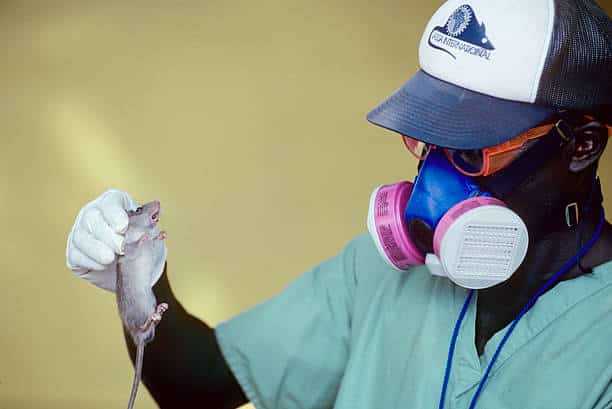
Health worker during an outbreak of Lassa Fever. (Photo by Karen Kasmauski/Corbis via Getty Images)
ABUJA, Nigeria — The Nigeria Centre for Disease Control and Prevention (NCDC) has reported a sharp rise in Lassa fever fatalities, linking the surge to delayed hospital visits, high treatment costs, and poor sanitation across affected regions.
In its latest Lassa Fever Situation Report for Week 8 of 2025, the agency confirmed 95 deaths, maintaining a high Case Fatality Rate (CFR) of 18.8%.
A significant number of these deaths resulted from late presentation at healthcare facilities, reducing the effectiveness of treatment.
Delayed Diagnosis Increases Lassa Fever Fatalities
Lassa fever, a viral hemorrhagic disease spread through contact with rodent excreta or human-to-human transmission, continues to spread across Nigeria. The NCDC confirmed infections in 12 states and 70 Local Government Areas (LGAs), with Ondo, Bauchi, and Edo accounting for 73% of cases.
Public health experts warn that misidentification of early symptoms remains a critical challenge. Fever, weakness, and body pain—common early indicators—are often mistaken for malaria or typhoid, prompting many to self-medicate instead of seeking professional care.
“By the time patients arrive at treatment centers, many are already experiencing severe complications such as organ failure, bleeding, or shock, which drastically reduces survival rates,” the NCDC report stated.
Poor Sanitation Driving the Outbreak
The rapid spread of Lassa fever has also been linked to inadequate waste management and poor environmental hygiene, particularly in high-burden states.
“Many communities struggle with waste disposal, creating ideal conditions for rodent infestations,” the report noted.
Experts stress that better sanitation practices, including proper waste management, rodent control, and food storage in sealed containers, are crucial in reducing transmission.
The agency urged the public to take preventive measures such as keeping living spaces clean, storing food in rodent-proof containers, and avoiding bush burning, which forces infected rodents into homes.
Medical Costs Hindering Access to Treatment
Dr. Gabriel Adakole, a public health expert, emphasized that financial barriers remain a major obstacle in Nigeria’s fight against Lassa fever.
“Ribavirin, the antiviral drug used to treat Lassa fever, is expensive. Many patients struggle to afford hospital bills and essential medications,” Adakole told the News Agency of Nigeria (NAN).
In several cases, families abandon treatment due to financial constraints, leading to preventable deaths. Adakole called for stronger government intervention, saying, “There is a need for state authorities to subsidize treatment and make it accessible to vulnerable populations.”
Government Response and Challenges
The NCDC, in collaboration with partner organizations, has intensified efforts to contain the outbreak. Rapid response teams have been deployed to affected states, and surveillance efforts have been expanded.
Despite these measures, gaps in public awareness and healthcare accessibility continue to fuel the crisis.
Adakole noted the need for a comprehensive approach, stating, “A multi-sectoral response that combines early detection, public health education, and improved access to treatment is essential to curb Lassa fever fatalities.”
Growing Demand for Urgent Health Action
As Nigeria faces yet another Lassa fever outbreak, calls for urgent intervention are growing stronger.
Also Read:Gunmen Raid Edo Church, Abduct Catholic Priest and Seminarian
Public health officials stress that with increased awareness, stronger healthcare infrastructure, and proactive community engagement, the country can significantly reduce fatalities.
“The fight against Lassa fever requires a nationwide commitment. Without swift action, more lives will be lost,” Adakole warned.





